You have no items in your shopping cart.
0
You have no items in your shopping cart.
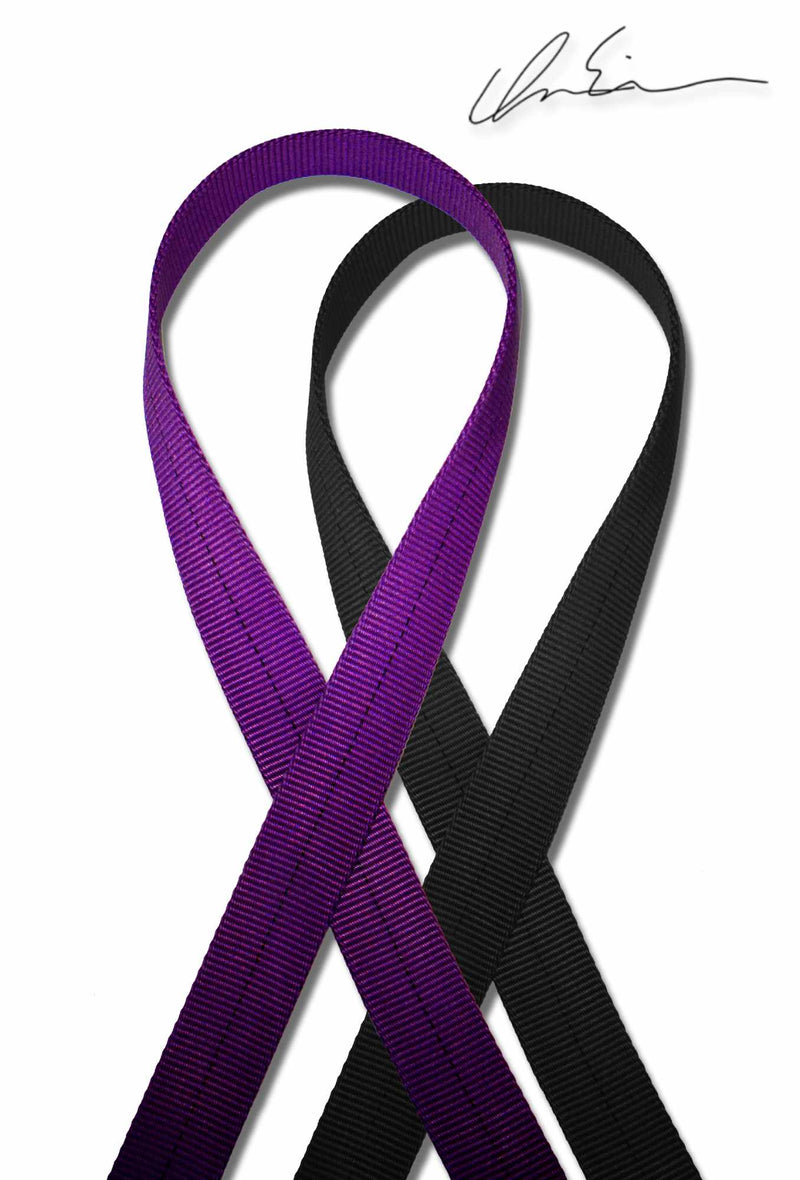
| Stretch | 15.47% @ 6kN |
| Material | Nylon |
| Weight | 40 g/m (2.69 lbs/100 feet) |
| MBS | 21.0 kN (4,720 lbf) |
| WLL | 7.0 kN (1,573 lbf) |
Style
Best Tension
This is the single length pieces of Paradigm Signature. If you are looking for a Freestyle Kit, you can see them here: Paradigm Signature Freestyle Kits
We set out with a clear goal: To make the best freestyle highline webbing imaginable.
Now, after a year of testing, and multiple prototypes later, we believe we have finally hit our mark.
In collaboration with Ian Eisenberg, Balance Community is truly proud to present:
Paradigm Signature: A custom Paradigm rig, fine-tuned and optimized to meet Ian Eisenberg's exact specifications. More Stretch. 10% lighter. Maximum performance. For Freestyle use ONLY.
*FOR EXPERT USE ONLY*
Paradigm Signature is a professional setup, and is not meant for use by beginner, or even intermediate highliners/riggers, due to it's lower MBS. Remember to inspect your webbing before and after every use, and retire it when necessary.
Paradigm Signature, based on our Paradigm webbing, was built from the very beginning to be optimized for freestyle. What does that mean exactly? A good freestyle webbing has a number of characteristics that set it apart from off-the-shelf webbings:
1.) Stretch
The first spec that most people look at when considering which freestyle webbing to buy is the raw stretch of the webbing. However, there is much more to stretch than just % of elongation at a given tension. In freestyle, a highliner will typically bounce the line many times over and over, increasing and decreasing the tension of the line as they push into each bounce. At critical moments within the bounce, stability and power are needed. To achieve this ideal line behavior, we need a steep stretch curve - The change in stretch as the tension changes. Bouncing on a webbing with a less-steep stretch curve, we experience a hard "floor", or resistance at the bottom, causing shakiness and instability. With a steep curve, the entire range of motion within the bounce is fluid, and it never really feels like there is a bottom.
Paradigm brings that feature straight to the front. The stretch curve is very steep in the critical tensions that freestylers use (2 - 5 kN), resulting in a super-stable, yet deep and powerful bounce.
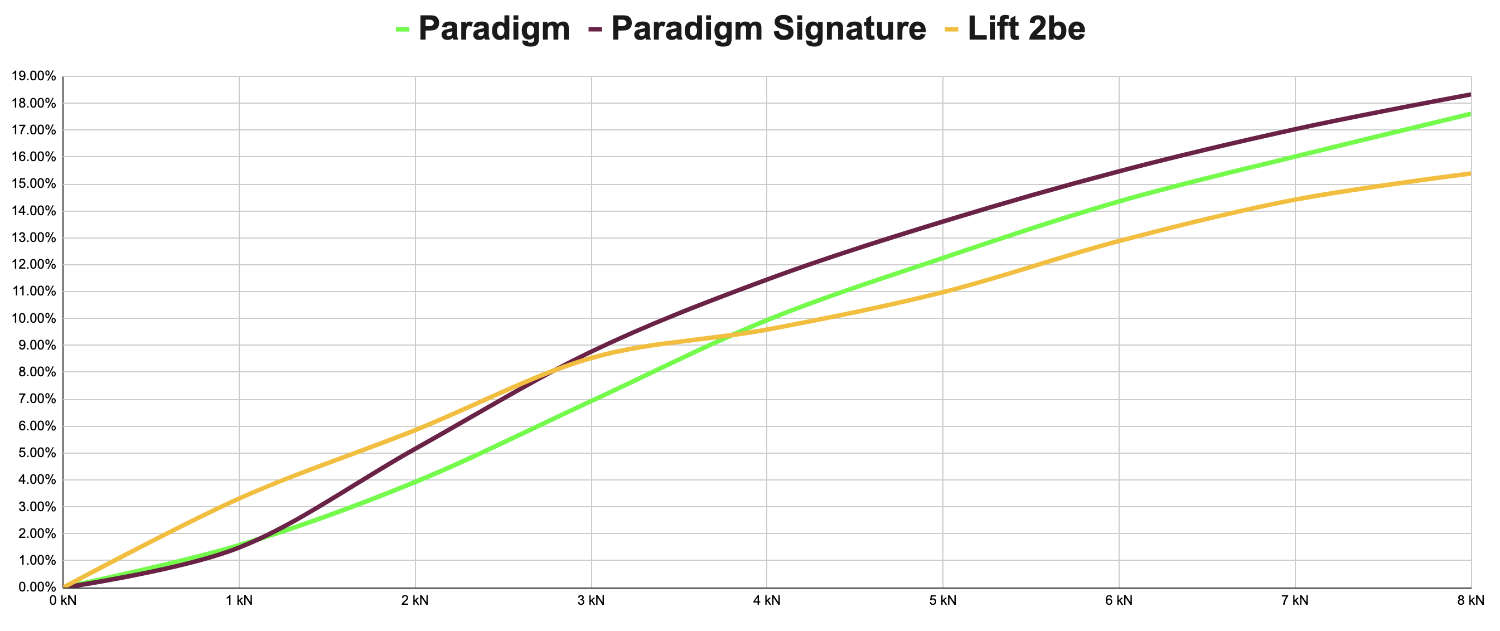
Adding to that, Paradigm Signature sports a very low optimal tension (1.8 - 2.2 kN), making it a breeze to tension, even while rigging alone (using a compound or multiplied Buckingham tensioning system).
2.) Weight
A more recent discovery in the freestyle world is the effect of line-weight on one's ability to do certain tricks. A lot of freestyle tricks require that the webbing moves in a large ellipse around the highliner as the tricks are executed. A heavier line creates a ton of momentum, making it much harder to stop and steady the line, causing a much higher difficulty in sticking “feet-to-feet” tricks. Whereas, a low line-weight allows the highline to be moved around much easier and much faster, giving more potential for more technical and more dynamic tricks. Remember that a single gram per meter increase in the main and backup webbings on a standard 70m freestyle line adds 140 grams to the total line weight!
Paradigm comes in at an industry leading weight of just 44 grams per meter
3.) Durability
With how dynamic and frequent the interactions between the highliner and the webbing are on a freestyle rig, durability of the line is paramount. We will discuss this feature much more in-depth in the below section.
Throughout the journey of designing a freestyle webbing with Eisenberg, it was very clear that his style demanded the utmost performance from the webbing he was using. However, there seemed to be no combination of weight, elasticity, and durability that remained within the ISA Class C webbing specifications, that was enough to meet Ian's needs and propel him forward on his journey to continually innovate on the line. So, we decided to split Paradigm into 2 different webbing categories.
Below, we will look at the differences between the two webbings:
Paradigm - 22.2 kN (5,000 lbf)
Paradigm Signature - 20.0 kN (4,496 lbf)
Paradigm - 44 g/m (2.96 lbs/100 feet)
Paradigm Signature - 40 g/m (2.69 lbs/100 feet)
As we can see from the above, Paradigm Signature is essentially Paradigm with 10% of the fibers removed. This gives the webbing a lighter form, a higher stretch, and more performance focus. However, this comes at the expense of strength and durability. The result is a webbing that, while being ultra-high performance, is also more susceptible to abrasion. For this reason, we do not recommend Paradigm Signature to anyone but those at the cutting edge who are at the top of their freestyle and, more importantly, rigging game.

| Tension | Paradigm | Paradigm Signature |
|---|---|---|
| 1 kN | 1.58% | 1.49% |
| 2 kN | 3.92% | 5.16% |
| 3 kN | 6.93% | 8.77% |
| 4 kN | 9.94% | 11.45% |
| 5 kN | 12.25% | 13.61% |
| 6 kN | 14.35% | 15.47% |
| 7 kN | 16.02% | 17.04% |
| 8 kN | 17.61% | 18.33% |
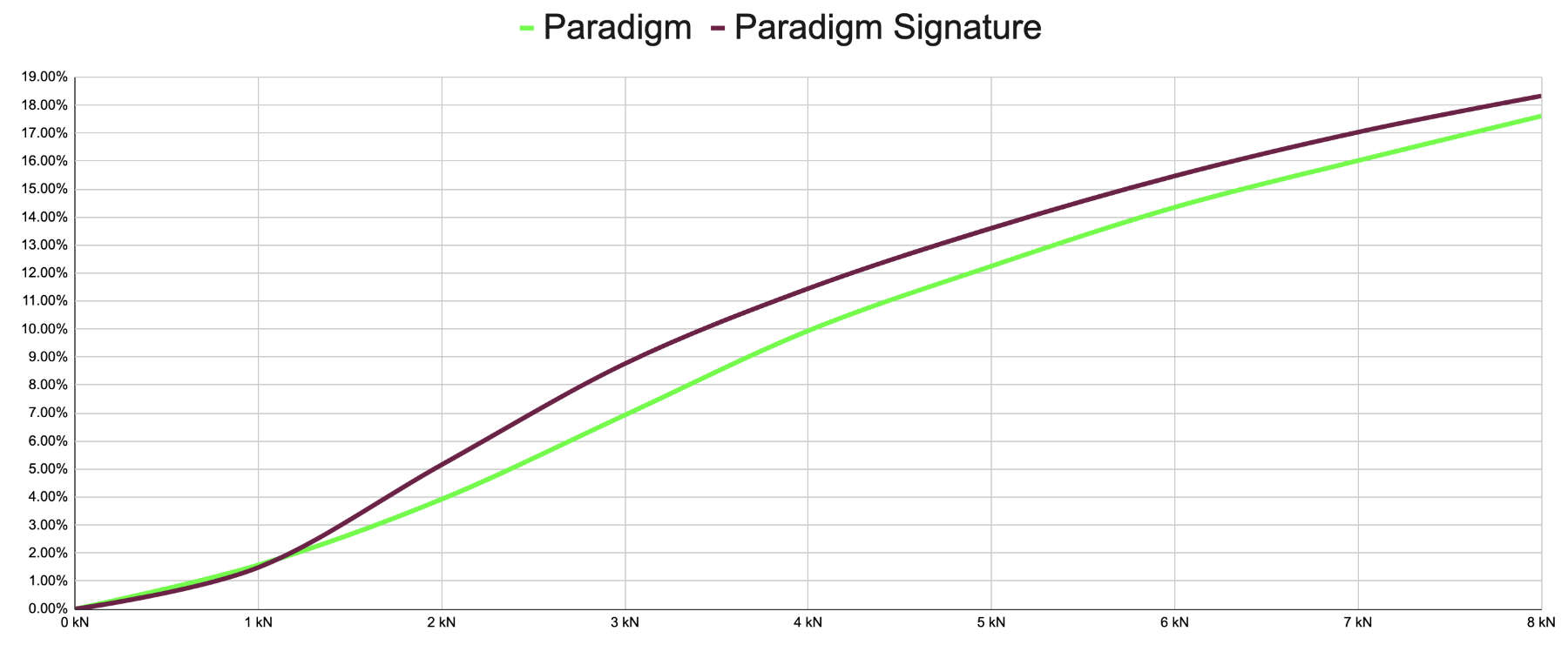
From the chart, it appears that Paradigm Signature is much more bouncy than standard Paradigm. However, this is not the case at all! If we instead map the change in stretch, or the slope of the stretch graph, we can see that both webbings are stretching at a very similar rate beyond the 3 kN range! This gives each webbing nearly identical power through the bounce cycle, particularly at the bottom. The Signature model just packs slightly less weight, giving it a bit less mometum and ease to move about.
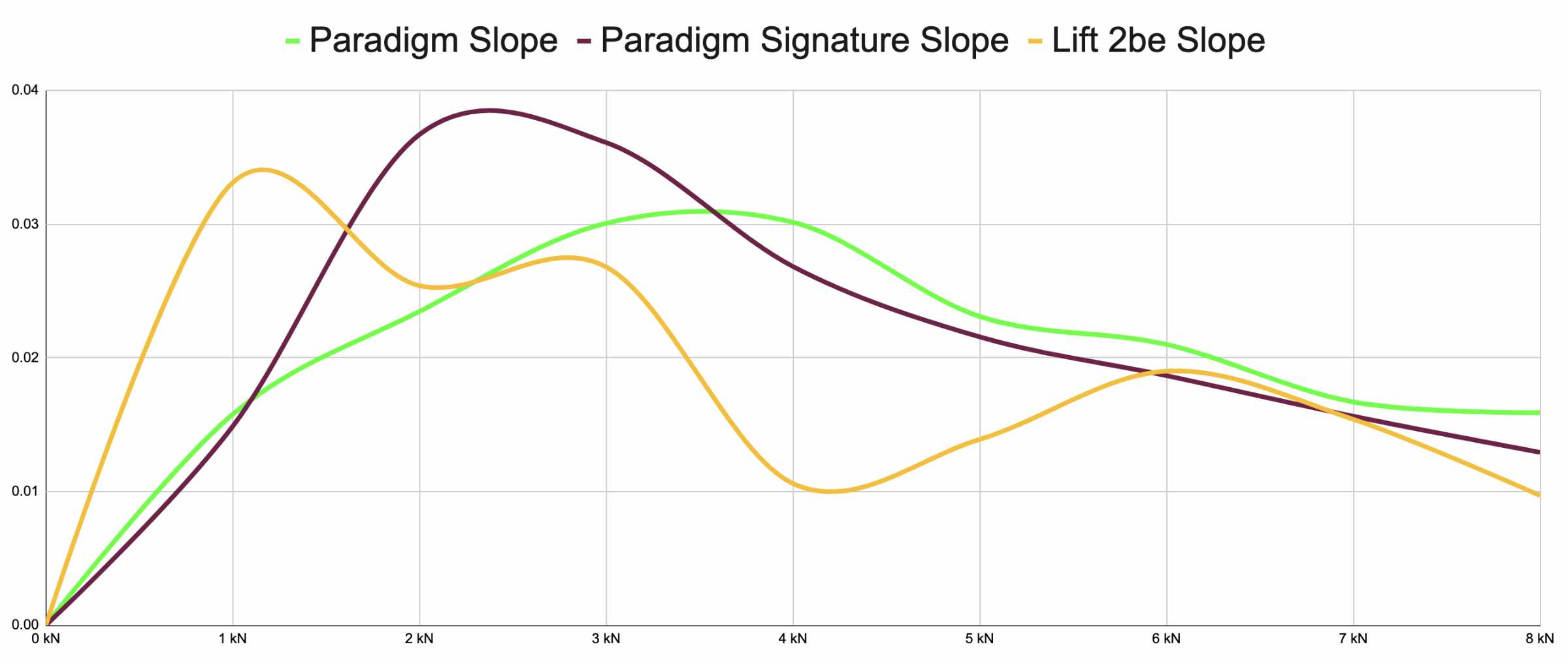
The last difference between these two webbings is the trick zone that is included with the freestyle kits. Paradigm Freestyle Kits come with a moveable sleeve over both the main and backup.
Paradigm Signature kits come with a sleeve that is fixed in the middle of the line. This sleeve is threaded over a pair of standard Paradigm webbings that are then sewn to Paradigm Signature just beyond the sleeve with a strong join stitch. This fixes the location of the sleeve and so positioning must be done while rigging. No sewn loops come with these kits as you will not use them.
Paradigm Signature is only available in Freestyle-Kit form.
As we discussed briefly above, freestyle highlines have a ton of interaction between the highliner and the highline, as well as between the leash + ring and the highline. For this reason, we made durability an absolute priority in the design of Paradigm Signature.
It starts at the weave itself. The general style of weave that Paradigm Signature uses is similar to most other freestyle webbings - a plain tubular weave with colored marker yarns somewhere on one or both faces of the webbing. However, if we look closer at the building blocks of that weave, Paradigm Signature goes a step further. We use twisted yarns in the construction of Paradigm Signature. This means that every single strand of yarn in the weave is twisted together with another yarn of the same size and type. This limits the surface exposure of each individual yarn, giving it a much better resistance to abrasion damage.
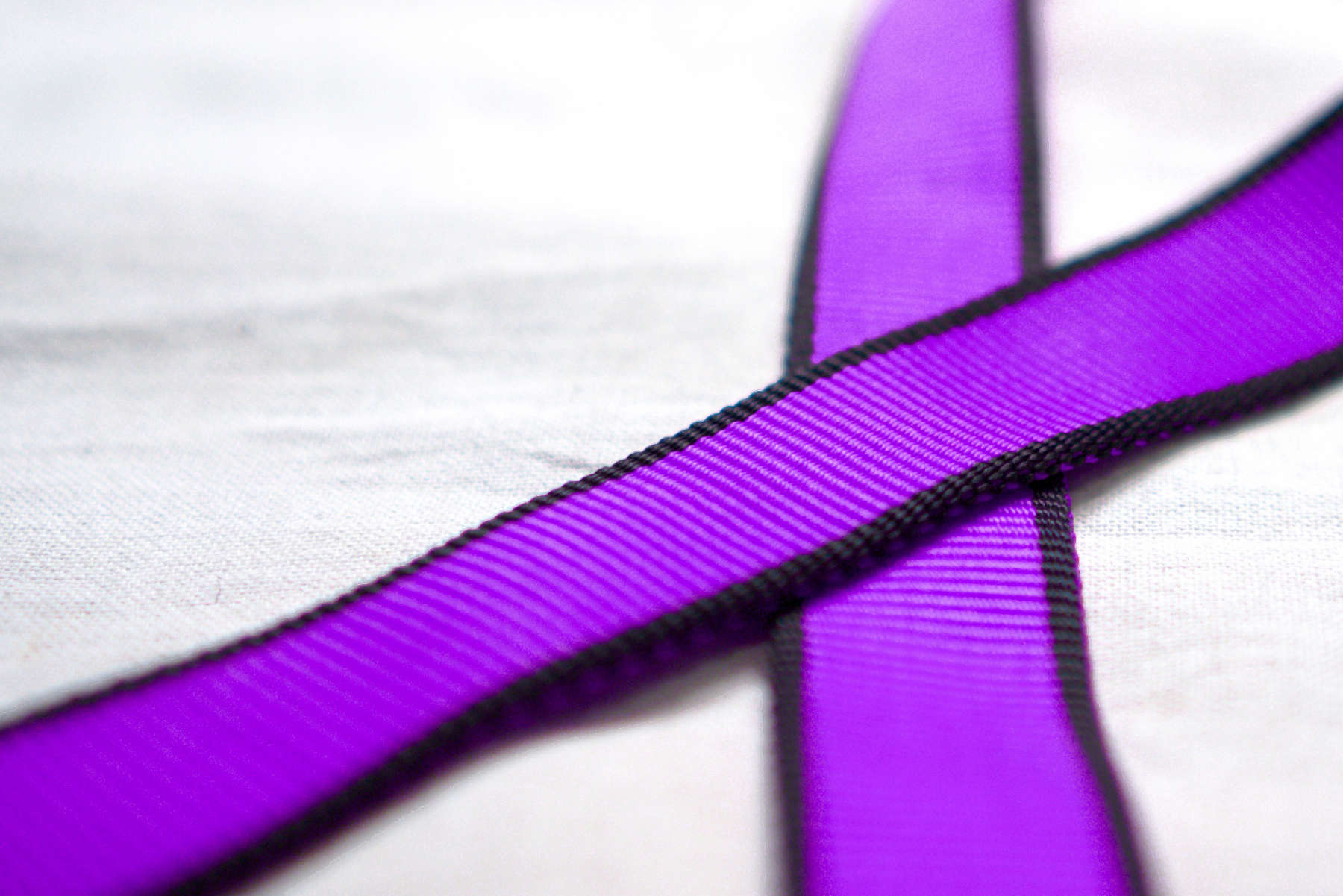
Second, after Paradigm Signature is done weaving, we apply our signature LineSkin Resin Coating. If you haven't heard of this coating, it's incredible at providing a barrier for abrasion. This coating is not just a liquid that is put on the webbing - it's actually nano particles that latch on to the individal yarns and act as a shield for anything coming in contact with the webbing. It repels dirt, water (Paradigm Signature floats), and provides a buffer for direct abrasion.
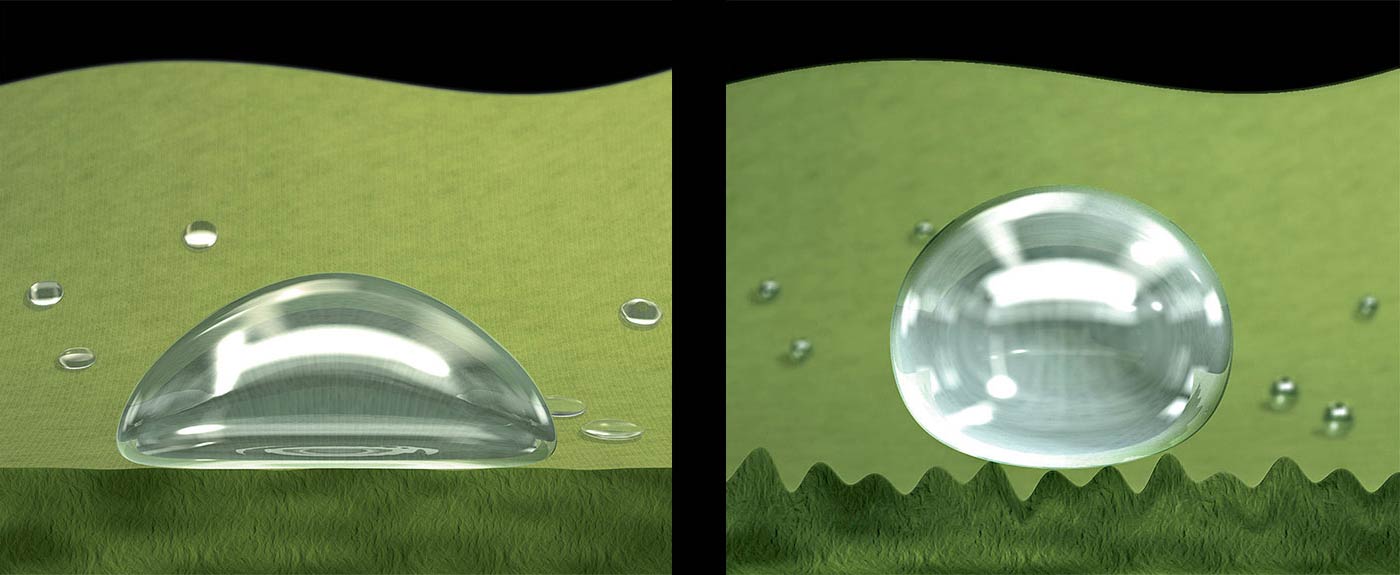
Third, the trick zone! This deserves its own full section. See below.
One of the defining traits of a freestyle highline is that the highliner typically stays in one area of the line for the duration of the session. This is usually just a few meters right in the middle of the line. This results in a huge amount of leash falls and a LOT of abrasion concentrated in one small section of the line.
To combat this, freestyle highliners have begun using tubular "sleeves" in the middle of their lines to protect their webbing. With these things in mind, we have developed our own version of this sleeve. The Freestyle kits that we offer on Paradigm Signature come with a 5m sleeve that is threaded over a pair of 6m long Venom Green Paradigm pieces that have an X-Stitch in the middle. This threaded 6m long segment is then sewn to a Paradigm Signature on each end with a strong join stitch. This gives your freestyle rig 3 distinct zones:
The stretch zones are made up from Paradigm Signature strands. This zone is meant to be the part of the line that does the majority of the stretching. For this reason, we wanted to use the highest elongation webbing we could while still maintaining the safety in the line. Enter Paradigm Signature, with an astonishing amount of stretch in the window of tensions used by most freestylers.
The trick zone is meant to be as durable as possible since this is the location on the line where most of the time is spent and tricks are done. This area of the line will see the most abrasion risk and thus needs to be burly without taking away the feel of the line. We opted to use a pair of our Paradigm webbing strands that are each 6m long. We put an X-stitch right in the middle of them, then thread it through a 5m long tubular protective sleeve. We then sew all four ends to the stretch zone Paradigm Signature pieces. This gives us a flippable, protected, extreme stretch freestyle rig that will launch you to new heights in your freestyle game.
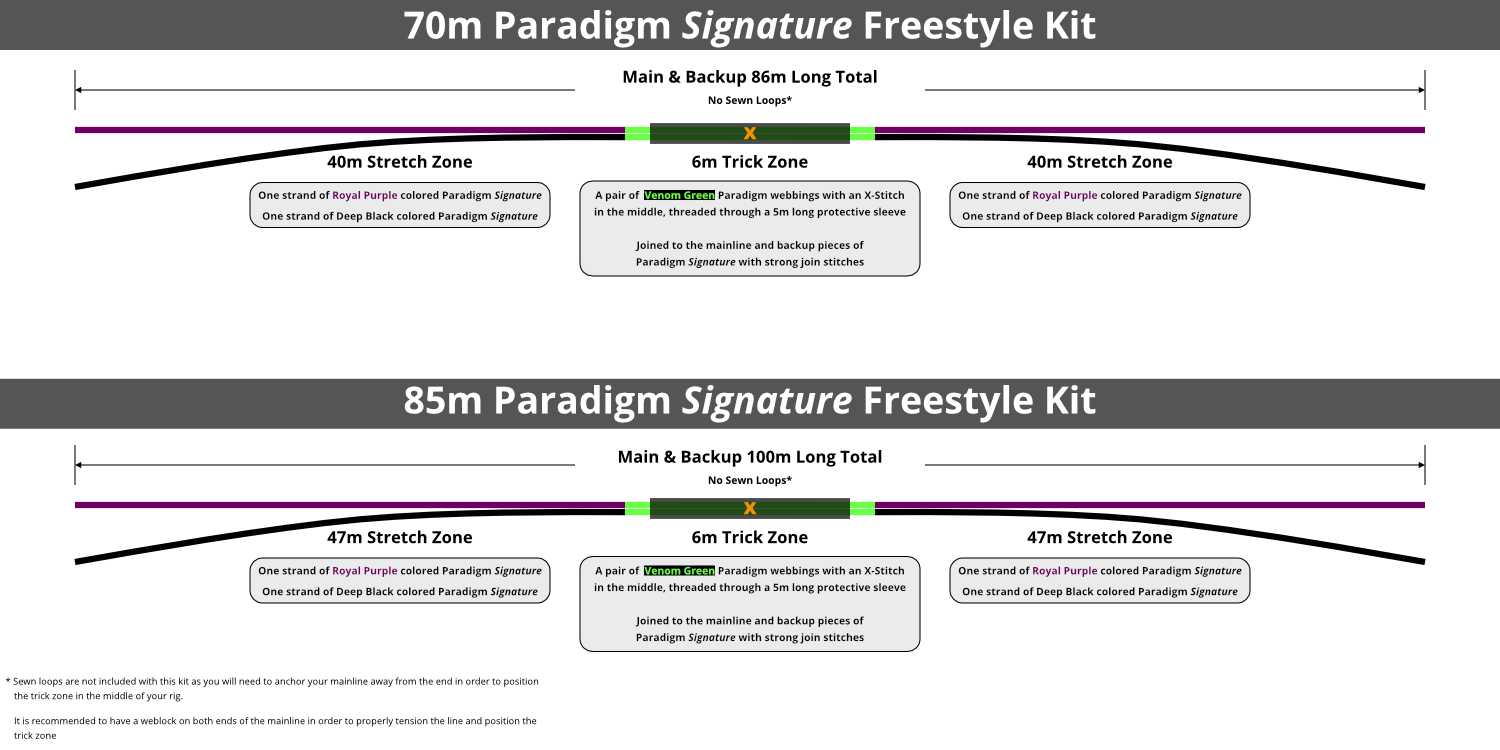
Our protective sleeve is unlike a lot of other sleeves, in that it sits on the double webbing very tightly. It's 32mm wide, so it just barely fits over the main and backup lines, preventing the sleeve from feeling loose and "slippery".
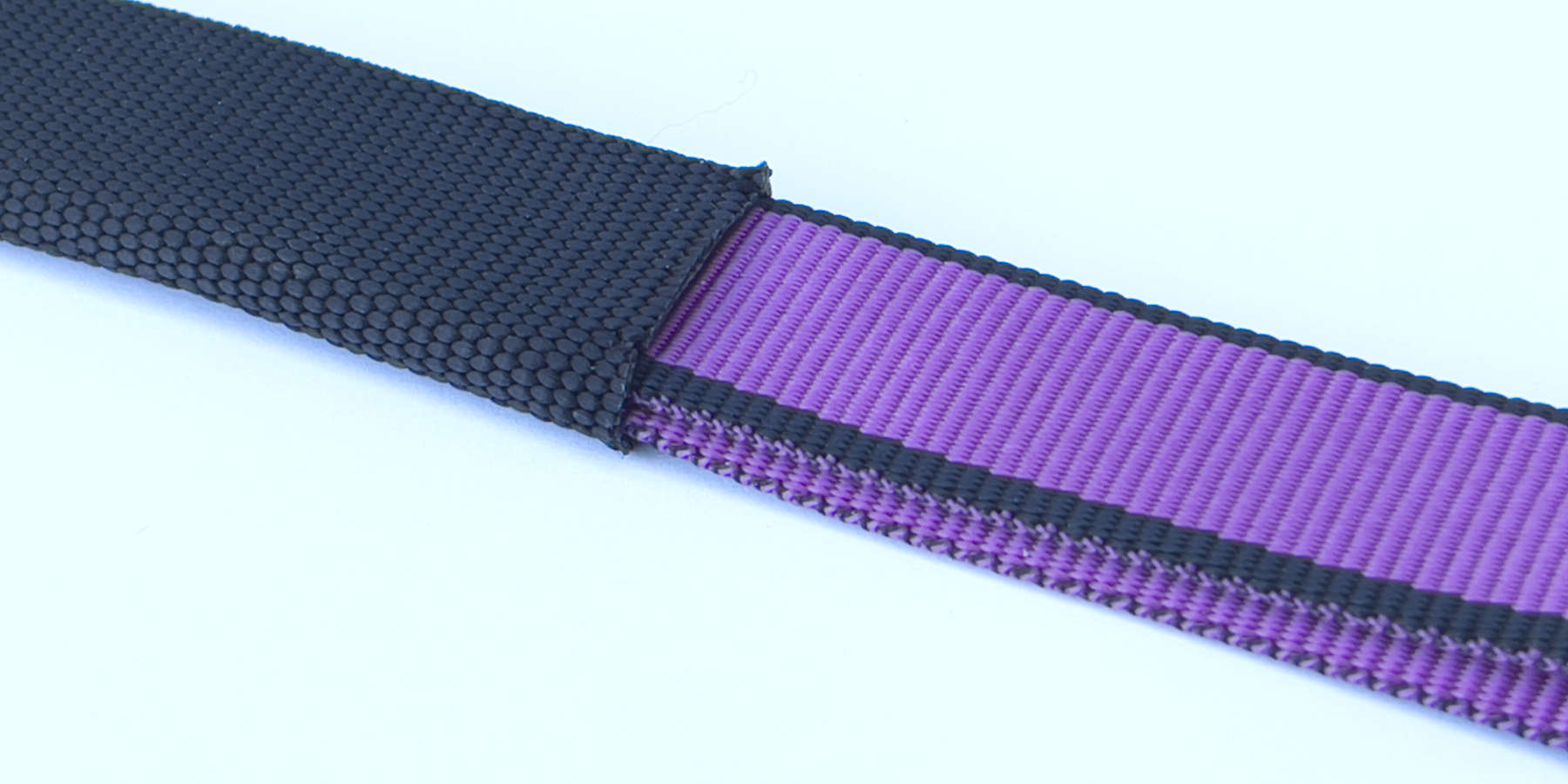
Do not remove the protective sleeve from your rig. Choosing to do so is done at your own risk - voiding the warranty on your kit.
Freestyle webbing stretches a LOT, particularly modern tubular freestyle webbings. For this reason, the backup line needs to be considerably longer than the mainline, especially since it acts as further stabilization for the highliner during these massive dynamic tricks.
With such a long backup, often times 18 - 20% longer than the mainline, the risk for a massive fall in the event of a mainline failure is quite large. For this reason, we have opted to add a middle stitch in our Paradigm freestyle kits. This "X-Stitch" provides a hard point between the mainline and backup line, positioned directly in the center of the two lengths of webbings. This hard point acts as an absorption of fall distance, drastically reducing it compared to a non-stitched line.

In the event of a mainline failure, there is still half of a tight mainline on the opposite side of the stitch that can absorb some of the slack from the brokenhalf's backup. This will significantly lower the fall distance in this very dynamic event.
One of the key benefits of the X-Stitch over other stitched backups is that it allows you to flip your rig and use the backup line as the mainline. This is great for the longevity of your rig as you can extend the life of the full setup considerably by flipping it every couple of rigs.
It is recommended that you flip your setup every 2-4 sessions to maximize the length of time you can use the rig. As soon as either of the webbings are showing signs of degradation, the entire rig needs to be retired.
The high frequency oscillations that are a large part of the freestyle discipline causes the mainline webbing to stretch and unstretch within your webbing anchor. When using a MightyLock, this stretch can cause major abrasions to the webbing over a very short period of time. It is recommended to use weblocks on both ends of the mainline to prevent this issue.
There is a LOT of potential to damage your line during a freestyle session. It is imperative that you check every meter of your line before AND after each and every session. Retire if there is ANY doubt of safety. Paradigm is a low strength nylon webbing that is tubular in structure, giving it less durability than a multi-layered flat webbing.
UV and Nylon do not mix. There is a very steep decline in the strength of nylon tubular webbings after prolonged exposure to UV. Do not leave Paradigm perma-rigged or rigged for longer than a few days at a time.
Freestyling on your line causes significant abrasion and can lead to mainline failures if done outside of the Trick Zone. Keep your freestyling on the tubular sleeve. This is particularly true of Paradigm Signature. Do not, under any circumstances, bounce or trick outside of the sleeved Paradigm section on your Paradigm Signature kit.
The protective sleeve that is meant for the trick zone is there to protect your webbing. Removing it will expose the delicate nylon tubular webbing beneath, subjecting it to further risk of damage. Do not remove the sleeve - doing so will void the warranty on your freestyle kit.
This is not an exhaustive list. Please use your better judgement on deciding when to retire your rig and take the above precautions to extend the lifespan as much as possible.
"After nearly a year of studying webbing behavior and testing various prototypes with Balance Community, I am very happy to present Paradigm, a next-gen freestyle webbing that I'm proud to put my name behind. Effortless Yoda Rolls, huge, stable bounces, and insane 'pop', this truly is 'The Cheater Line'. Get ready to take your freestyle game to the next level with Paradigm."
- Ian Eisenberg

Width – 25.4 mm (1.00 inches)
Thickness – 2.1 mm (0.08 inches)
Weight – 40 g/m (2.69 lbs/100 feet)
MBS – 21.0 kN (4,720 lbf)
WLL – 7.0 kN (1,573 lbf)
Abrasion Retention – 0.65
AWL4 Mean Strength – 21.1 kN (4,743 lbf)
AWL4 MBS – 19.4 kN (4,361 lbf)
AWL5 Mean Strength – 21.4 kN (4,810 lbf)
AWL5 MBS – 20.1 kN (4,518 lbf)
AWL6 Mean Strength – 21.1 kN (4,743 lbf)
AWL6 MBS – 19.0 kN (4,271 lbf)
MightyLock Mean Strength – 19.2 kN (4,316 lbf)
MightyLock MBS – 17.5 kN (3,934 lbf)
LineGrip Slippage – No slippage up to 100% of WLL (15 kN)
Wafer XL Slippage – No slippage up to 150% of WLL (15 kN)
Wafer Slippage – No slippage up to 150% of WLL (6 kN)
Mean Strength – 19.7 kN (4,428 lbf)
MBS – 17.5 kN (3,934 lbf)
Thread Type – 208-lb Bonded Polyester
Raw Materials – 100% Nylon
Weave Structure – Plain Tubular Weave with colored edges
Weave Zoning – Single Zone
Style – Optimized for dynamic movements at all tensions. Best with a lightweight backup.
Optimum Tensions – 1.8 - 2.2 kN (404 - 500 lbf)
Preferred Lengths – 15 - 100m (50 - 330 feet)
Approved – Yes
1 kN – 1.49%
2 kN – 5.16%
3 kN – 8.77%
4 kN – 11.45%
5 kN – 13.61%
6 kN – 15.47%
7 kN – 17.04%
8 kN – 18.33%
9 kN – 19.55%
10 kN – 20.52%
11 kN – 21.41%
12 kN – 22.28%
